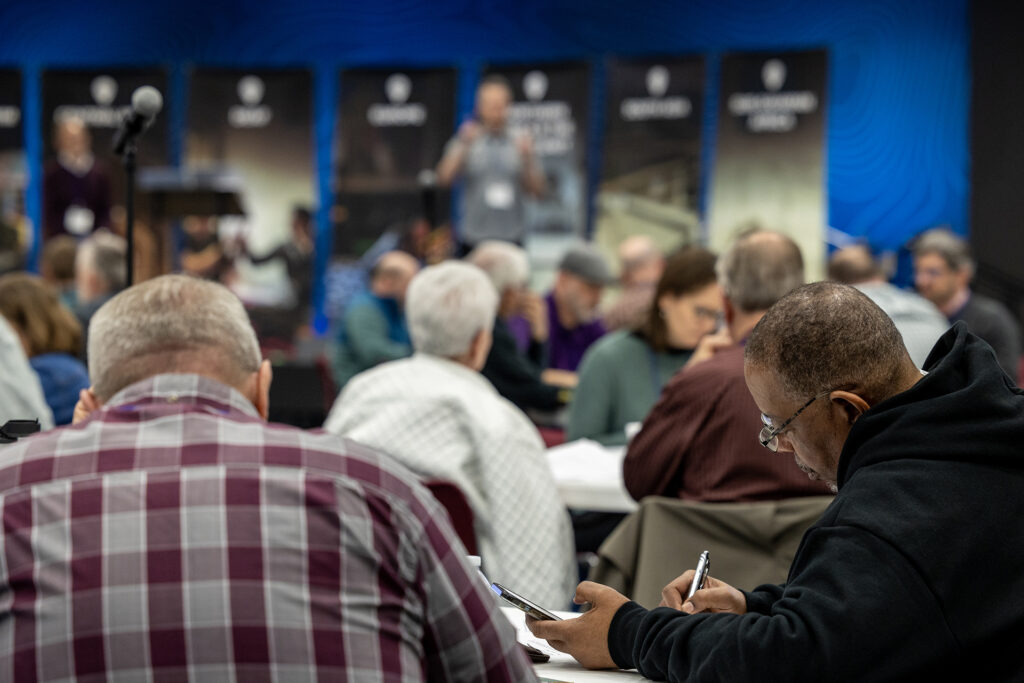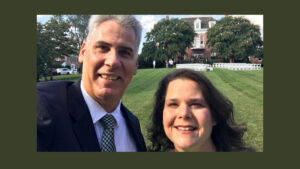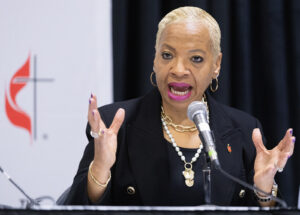
RICHMOND, Virginia (BP) — Mark Hearn, senior pastor of First Baptist Church, Duluth, Georgia, has been strengthening discipleship in his church. In the process, he’s seen that, “a natural part of discipleship is equipping people to go.” Duluth is one of the most diverse cities in the U.S., and the church reflects that diversity. Members represent 54 nationalities. Hoping to learn from other churches, Hearn attended the International Mission Board Senders Summit on March 5-7 and gained encouragement for discipling “such a diverse people to the point of being missionaries themselves.” He recognizes that many of his members will return one day to their home countries. He wants them equipped to make disciples, and he wants his members ready to answer God’s call to go overseas.
Hearn was one of 124 participants who gathered near Richmond, Virginia, in the first event of its kind hosted by the IMB. Event leaders Chris Derry, director of church and campus engagement, and Scott Ray, senior director of field personnel employment, emphasized IMB was providing a platform for churches to learn from each other as they develop missionary training and sending pipelines from within their congregations.
Ray said he sees a difference in missionary candidates who have received preparation and training in their churches prior to applying with the IMB. For example, most candidates who are sent from Calvary Church in Clearwater, Florida, a church that intentionally develops and deploys members with a missionary calling, will reach the mission field.
“There are opportunities for your pipeline and our process to overlap so that your people can make it to the field healthier and quicker,” Ray said.
“We wanted to have this summit because we’ve seen amazing results when churches invest in their people.”
Start somewhere
During the summit, speakers shared from the platform, followed by discussion in small groups in a time called “Iron on Iron.” Leaders from four ministries shared their methods to encourage other churches to be on mission. They represented models from local churches, associations and states cooperating to train and send missionaries.
“If we don’t start, we’re not going to do anything,” said Paul Colton, pastor of mobilization and sending at Calvary Church, Clearwater, Florida. “There’s so many questions and reasons why you shouldn’t, but you just gotta start.”
“Start somewhere” was an encouragement repeated throughout the event.
Calvary’s pipeline model includes coursework and practical training that help church members discern and follow through on their missionary calling.
“We trust that there are people in our church that God is calling and raising up to go,” Colton said during the session he led. “Many in our church don’t know they’re called yet.”
Not everyone who attends Calvary’s monthly pipeline meetings or takes the courses becomes a cross-cultural missionary overseas.
“People in our pipeline might be future worship pastors; they might be future youth leaders,” Colton said. But they’re all equipped to obey the Great Commission, and they contribute to a missions-minded culture at Calvary, he explained.
Katie Holcomb, global ministry associate at Cornerstone Baptist Church in Aimes, Iowa, said she sees this at her church. Sharing at her table after one of the presentations, Holcomb said her church has a missionary cohort in place, and a big part of that are the groups of church members who pray for and stay in relationship with missionaries. People in those groups aren’t currently missionaries, but they cultivate a missions environment and increase the church’s engagement in missions.
“The entire church is the sending church, not just the mission staff,” Holcomb said.
Leaders emphasized that churchwide involvement in missions discipleship contributes to a healthy church environment that can raise up the next generation of missionaries.
Katie Bennett affirmed this in the students she serves. “The majority of students that come to us and have a clear calling to missions have been discipled well by their local church and have been given leadership opportunity,” Bennett said. She serves as a next generation mobilization coordinator for the South Carolina Baptist Convention.
Bennett and Charlie Swain spoke about the Palmetto Collective, a two-year program that helps prepare college juniors and seniors in South Carolina to be sent through their local churches to serve with IMB or the North American Mission Board. Participants meet monthly with a mentor from their local church, work through a curriculum together, and have opportunities to serve short-term in the U.S. and overseas.
“The backbone of the program is one-on-one mentorship in their church,” said Charlie Swain, who also serves as a next generation mobilization strategist in South Carolina.
Cris Alley, senior consultant for Sending Pathways at Union Baptist Association, Houston, and IMB alumni, spoke about a missionary sending effort from as associational structure. Five churches in this association work together to train and send their missionaries. This kind of partnership helps churches of all sizes reach their sending potential. The training method they follow “supplies trained missionaries for those called to go and leaders with passion for the lost among those called to stay,” Alley emphasized.
“We’ve built this structure because we believe churches can do more sending together than any one church can do on its own,” Alley said. “One church can’t do it all.”
One tension churches feel when they grow in discipling their church members to go to the mission field is facing what Alley calls, “the real cost of sending their very best.”
Zac Lyons knows the weight of this cost. He’s the pastor for missions and evangelism at Imago Dei Church in Raleigh, North Carolina. By May 2024, a third of their elder team and half of their staff will have been sent out to plant more churches and serve in ministry elsewhere. Since its beginning in 2011, they have sent a total of 65 missionaries to the field, with 45 currently serving.
“We have to embrace the cost of sending,” Lyons said, explaining the blessing of being obedient to the biblical model of churches sending out missionaries.
“If we’re making disciples, we’re sending missionaries,” he said.
Next steps
Talk around the tables following presentations included how churches can find a starting point or strengthen what they are already doing. The bottom line was the same, “Just start. Lostness is a problem that is growing each day, so we need to train and send more missionaries.”
Derry said this is what he wanted to see.
“The church is the appropriate place for training and cooperation gives us a mechanism for every church to have what it needs for the task. What I heard from leaders at the Summit was the desire to start networking with other churches in their city to share strategies, best practices, training resources and even facilities to help prospective missionaries learn, practice, build community and prepare. No church should feel isolated or intimidated, when the resources of many can help all.” said Derry.
Attendance at this first Senders Summit reached maximum capacity, with many churches unable to secure spots. Derry said this shows great excitement for content like this. The IMB will host another event this fall in an effort to help more churches start and enhance missionary candidate pipelines. Learn more about the upcoming Senders Summit by completing the form on IMB’s website.
Leslie Peacock Caldwell contributed to this article.
















